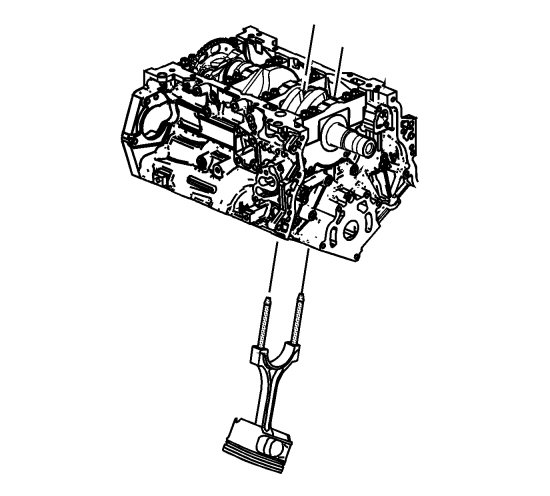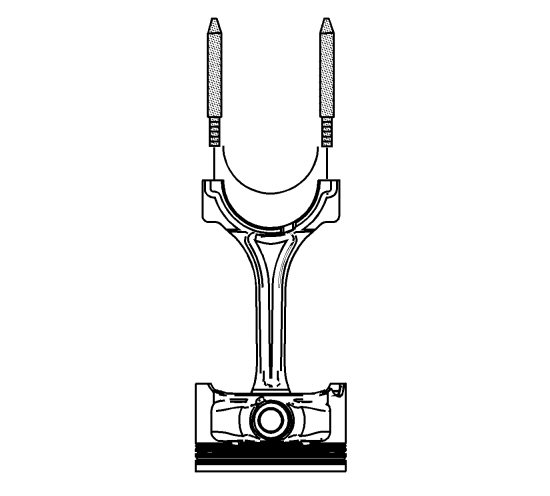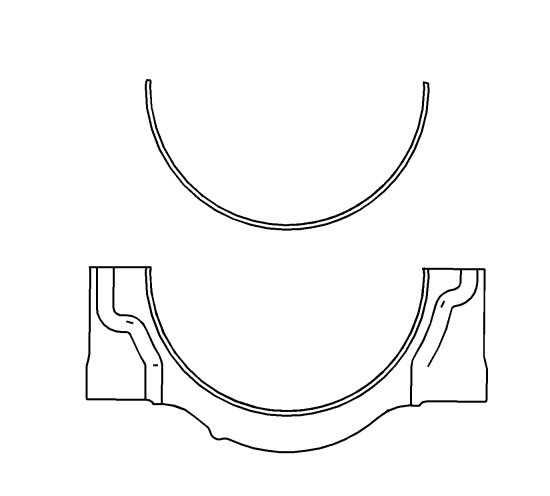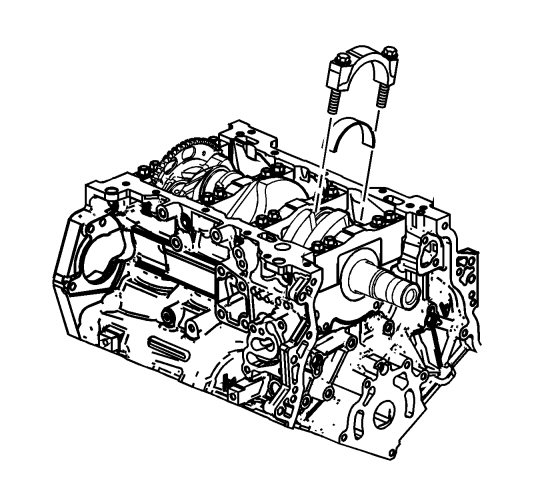Piston, Connecting Rod, and Bearing Removal
| Piston, Connecting Rod, and Bearing Removal |
Special Tools
EN 46121 Connecting Rod Guide Pin SetFor equivalent regional tools, refer to Special Tools .
| 1. |
Before removing the connecting rods, check the connecting rod side clearance using the following procedure: |
||||||||||
| 1.1. |
Tap the connecting rod to one end of the crankshaft journal with a dead-blow or wooden hammer.
|
| 1.2. |
Using feeler gauges, measure the clearance between the crankshaft counterweight and the connecting rod.
|
| 1.3. |
The connecting rod side clearance should not exceed specifications. Refer to
Engine Mechanical Specifications (LF1)
Engine Mechanical Specifications (LAU or LBW)
.
|
| 1.4. |
If the end play exceeds the specified limits, measure the width of the crankpin end of the connecting rod. Refer to
Piston, Connecting Rod, and Bearing Cleaning and Inspection
.
|
| 1.5. |
If the connecting rod width is significantly smaller than specified and severe wear is present on the side of the connecting rod, replace the connecting rod.
|
| 1.6. |
If the connecting rod width is within specification and excessive scoring is present on the crankshaft journals, replace the crankshaft.
|
| 2. |
Using a marker, number each piston face. Draw an arrow along the centerline of the piston pointing toward the front of the engine.
|
|
| 3. |
Mark the cylinder number on the connecting rod and the connecting rod cap with a scribe, paint stick or permanent marker. |
|||||||||
| 5. |
Remove the connecting rod cap. |
|||||||
| 6. |
Install the
EN 46121
set into the connecting rod bolt holes.

|
|
| 7. |
Use the set
EN 46121
and press up the piston and connecting rod through the cylinder's upper part. Do NOT scratch the crankshaft journal or cylinder wall and do NOT damage the oil nozzles when the piston and connecting rod are removed.

|
|
| 8. |
Remove the
EN 46121
set from the connecting rod bolt holes.

|
|
| 9. |
Remove the upper connecting rod bearing from the connecting rod.
|
|
| 10. |
Remove the lower connecting rod bearing from the connecting rod cap.

|
|
| 11. |
Reattach the connecting rod cap to the connecting rod to prevent damage to their mating surfaces. The cap and rod are a matched set and must be kept together.

|
|

 Warning
Warning


